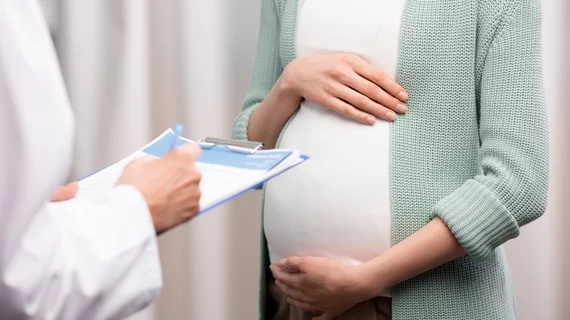Study: Miscarriages raise risk of CHD, heart failure in women
Results from a study published in the Journal of Women’s Health Nov. 27 suggest both miscarriages and a high number of births have a significant impact on women’s cardiovascular health, raising a mother’s risk for coronary heart disease (CHD), heart failure and even serious MI.
Lead author Clare Oliver-Williams, a junior research fellow at Homerton College in Cambridge, and co-authors call pregnancy “a stress test for a woman’s body.” While many of the physiological changes women go through in pregnancy are temporary—like weight gain, increased insulin resistance or elevated lipid levels—they’re also all established CVD risk factors.
“Previous studies have assessed the relationship between parity and different cardiovascular outcomes, including CVD, CHD and stroke,” Oliver-Williams and colleagues wrote. “However, the results of these studies have been conflicting; previous studies have found the lowest risk among nulliparous or multiparous women, a J-shaped relationship with the nadir of risk for primiparous women or no relationship.”
Those studies are also relatively broad, they said, and neglect to consider women who choose not to have children or adjust for factors like breastfeeding, which could have cardioprotective properties.
For their own research, the team considered 8,583 white and black women enrolled in the Atherosclerosis in Risk Communities Study. Parity and breastfeeding were self-reported by patients and the researchers pulled medical records to ascertain 30-year data on CHD, MI, stroke and heart failure events.
The overwhelming majority of the population—72.6 percent—reported between one and four live births. Nearly 20 percent said they’d had at least five children, while 6 percent reported no pregnancies at all. Follow-up yielded 1,352 cases of CHD, 843 MIs, 750 strokes and 1,618 heart failure events.
Compared to women with one or two prior live births, women who’d experienced miscarriages saw a 64 percent increased risk of incident CHD and a 46 percent greater risk of heart failure. Women with five or more live births on record had a 38 percent higher risk of having a serious heart attack and a 29 percent higher risk of CHD.
“The increased cardiovascular risk associated with multiple births has been found previously, although neither study adjusted for duration of breastfeeding per child,” Oliver-Williams et al. wrote. “There is evidence that repeated pregnancies could result in cardiometabolic changes, including weight gain, increased waist circumference and hyperlipidemia, as well as subclinical atherosclerosis. These previous findings are reflected in our own cohort, where women with multiple births had a higher BMI, lower high-density lipoprotein cholesterol, higher triglycerides and higher low-density lipoprotein cholesterol at baseline.”
The authors said their study lacked information about pregnancy outcomes, like preterm birth or preeclampsia, which limited their results. The trial also focused exclusively on white and black women, so findings can’t be extended to other patient populations.
“There is a clear need for accurate assessment of CVD risk in women as it is the leading cause of death,” Oliver-Williams and colleagues said. “Parity is a clinically useful measurement that may be beneficial in CVD risk prediction.”

